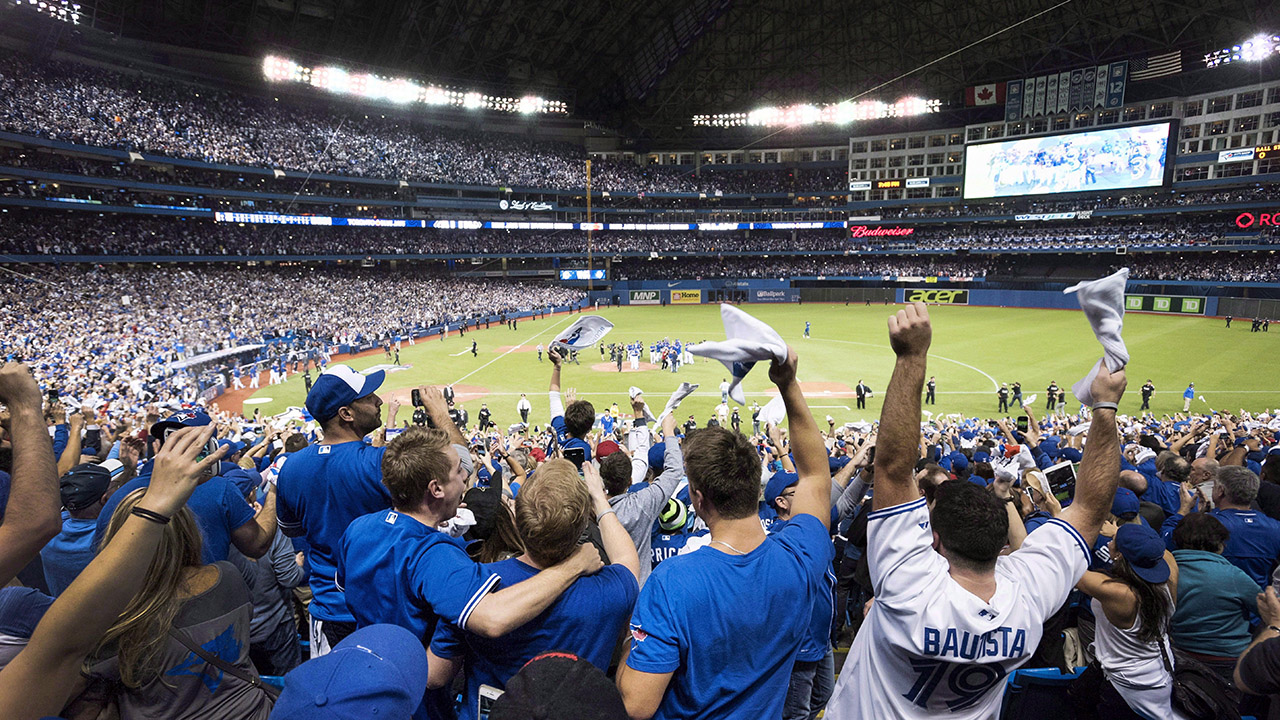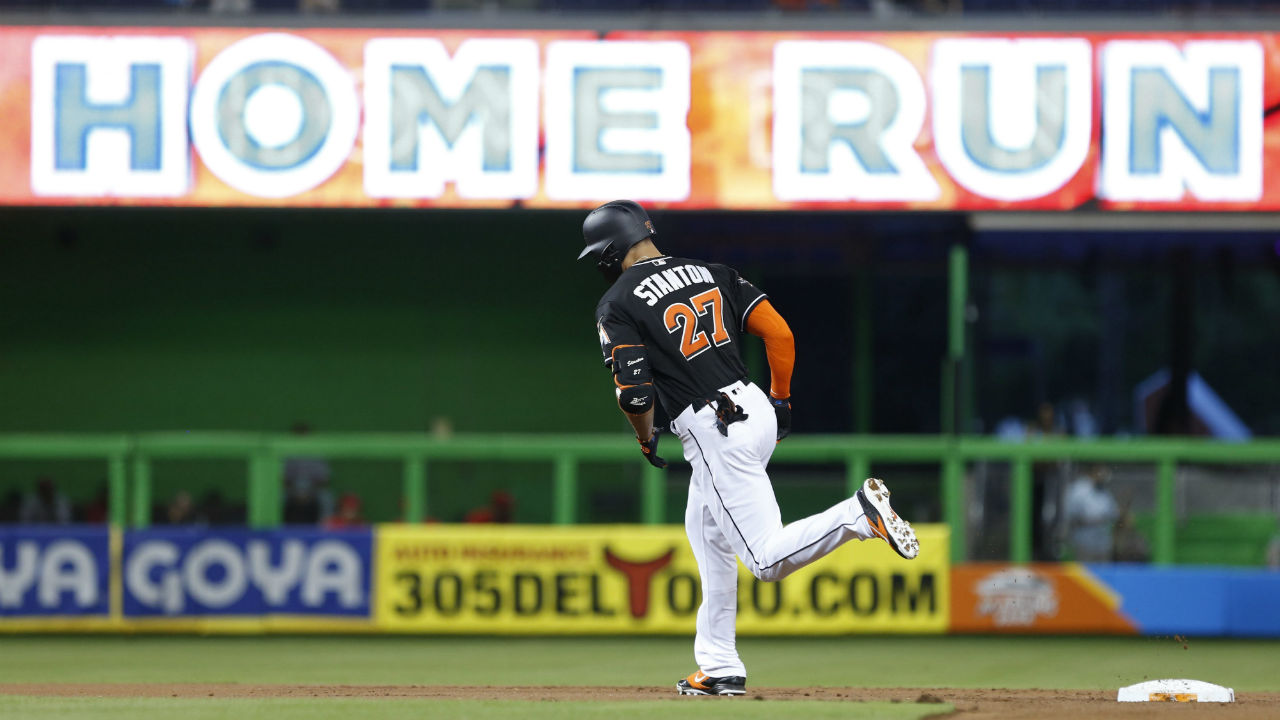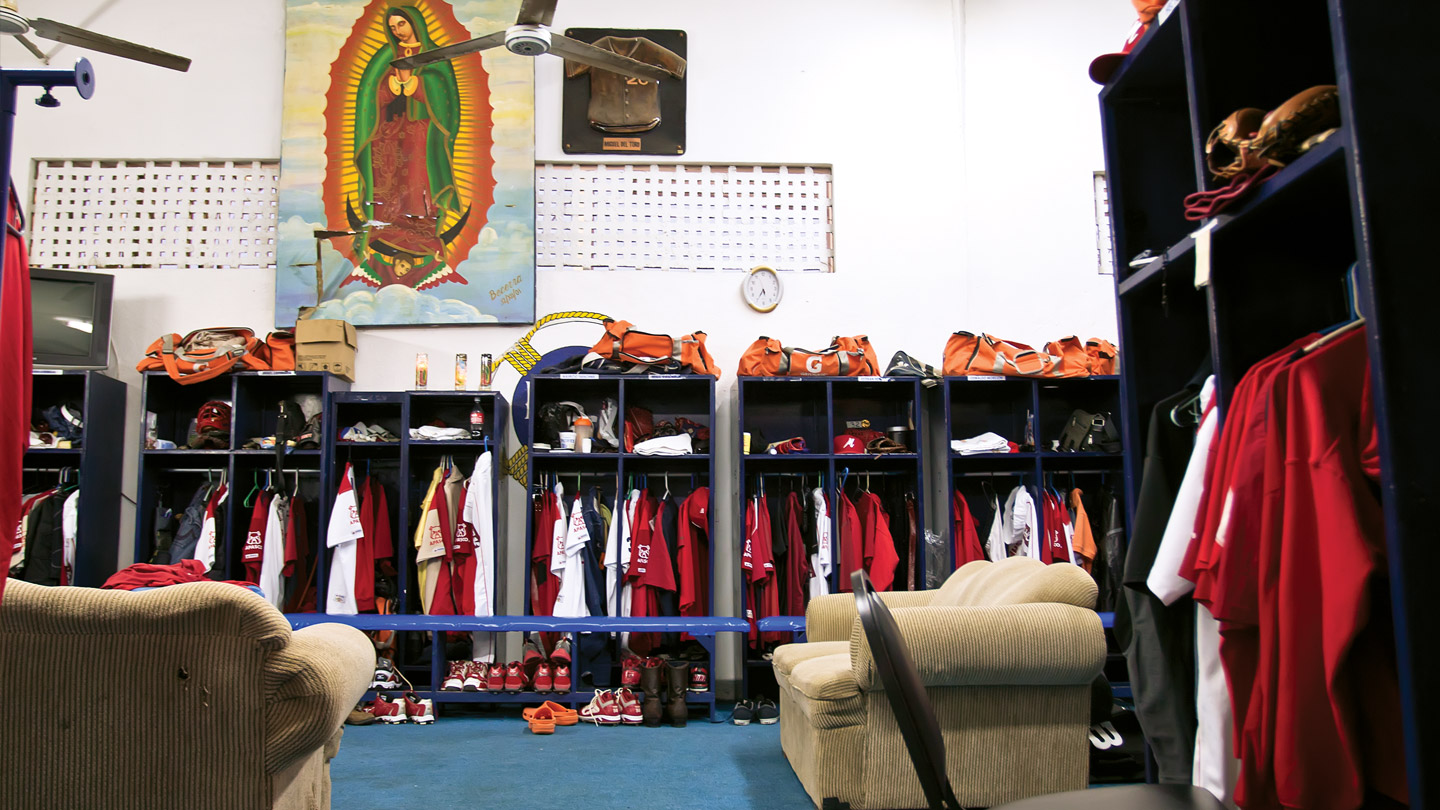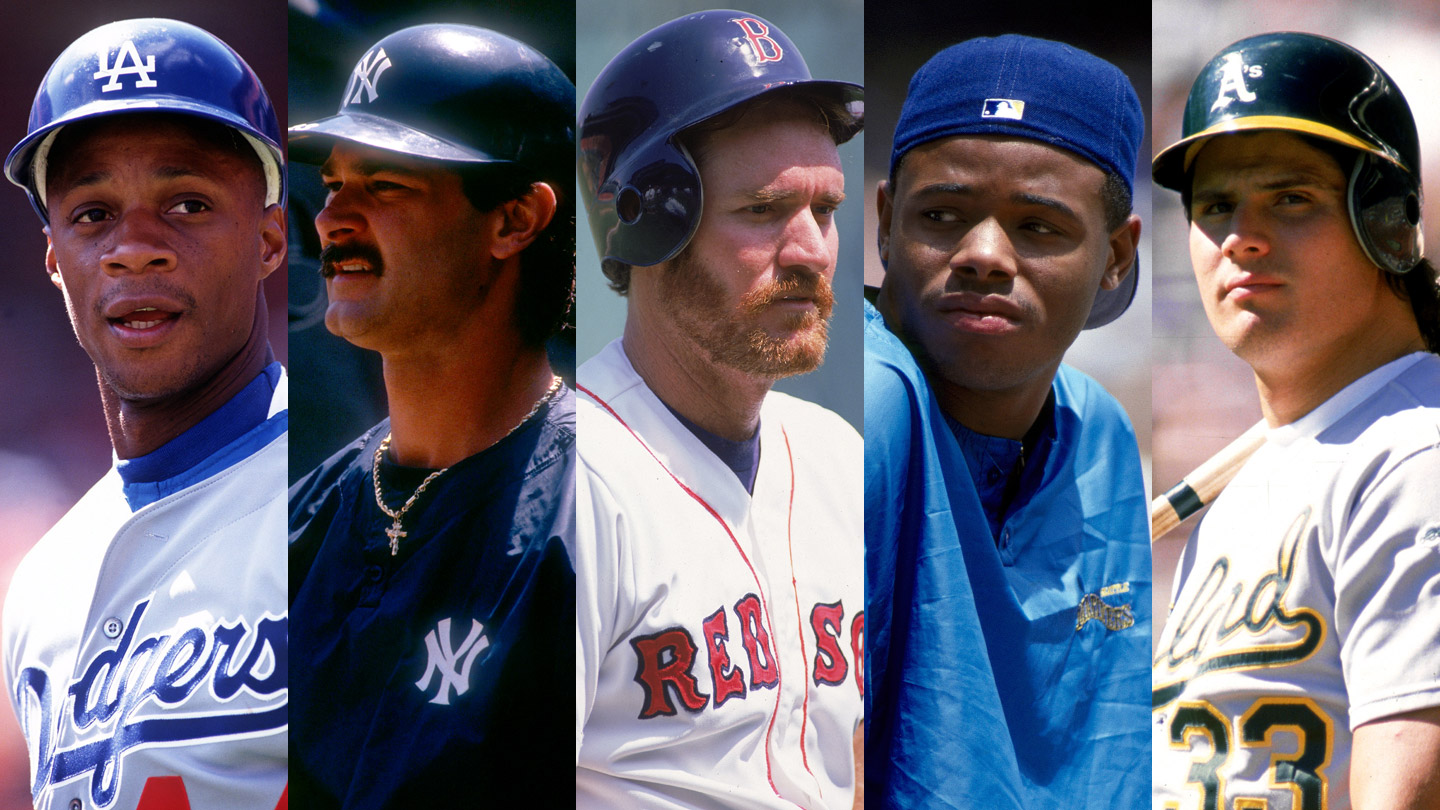A little more than two months have passed since the Toronto Blue Jays last played a game, and the executive offices at Rogers Centre are quiet — perhaps deceptively so. Absent the sounds and smells of summer, the primary reminders of baseball in the third-floor offices are the framed newspaper clippings, magazine covers and glossy photos from the Blue Jays’ glory years that line the walls. In what’s been a slow-developing off-season across baseball, the Blue Jays have only made minor moves. But the larger choices left to be made here in the next couple of months will determine whether the roster that takes the field on opening day looks competitive.
From within these offices, Ross Atkins thinks often about the best ways to make decisions: how to weigh subjective and objective analysis more systematically, how to ensure that one strong voice doesn’t overpower others, how to encourage Blue Jays employees to put ego aside and build trust with one another. Big picture, it’s all directed toward the ultimate goal — to “bring World Series championships back to Canada.”
But alongside those broad questions, Atkins also faces a more immediate challenge: What to do with a team at a crossroads. In 2016, his first season as GM, the Blue Jays celebrated a walk-off win in the wild-card game and advanced as far as the ALCS. One year later, the club stayed in last place until the final Sunday of the season. Now the 44-year-old former minor-league pitcher must address a roster with some legitimate talent but more than a few shortcomings.
Adding to the sense of urgency, the Blue Jays’ franchise player, third baseman Josh Donaldson, will hit free agency less than a year from now. Meanwhile, Toronto plays in one of baseball’s toughest divisions. The Boston Red Sox look like perennial contenders and the New York Yankees just added Giancarlo Stanton to an already impressive roster. Outside of the AL East it doesn’t get much easier, as powerhouse teams in Cleveland, Houston, Washington and Los Angeles await anyone who lasts late into October.
For years, baseball executives have behaved as though the playoffs are, as Theo Epstein put it, “a crapshoot.” Reaching the post-season requires talent, there’s no denying that, but so much in-game randomness impacts a short series that its outcome is about as predictable as a coin toss — or so the thinking goes. That perceived unpredictability pushed teams on the cusp of post-season contention toward short-term solutions, and they often worked, most recently in 2014, when the World Series featured two wild-card teams. For many executives, the crapshoot theory still holds water.
But there’s also a counter-argument that’s worth re-examining after an October that featured so many elite teams. Does anyone outside of the Minnesota faithful really believe the Twins would have toppled the Astros if they’d somehow reached the ALCS this fall? That they would have beaten the Dodgers in the World Series? Maybe those long-coveted wild-card berths simply aren’t as valuable for any team with a merely ordinary talent base. And if clubs need more than 85 wins and a couple of lucky bounces to find true success in today’s game, they should plan accordingly — even if it means accepting some of the struggles that the sport’s last two champions endured.
At the GM Meetings last month, I asked club executives how they’d approach a hypothetical dilemma: You’re a team on the cusp of contention. Do you push for success in 2018, despite the substantial obstacles in the way, or pull back, prioritizing the future over the present in the hopes of building toward a team capable of not just reaching the playoffs but thriving once it gets there? And how do things change if you’re competing against some especially talented division rivals?
“You’re just describing a certain team in Canada,” joked one GM. “It’s hard. It’s a hard place to be.”
Indeed it is. Given that a 2018 division title now looks like a long shot, should the Blue Jays push for a wild-card or entertain offers for their win-now pieces with an eye toward winning in 2019-20, when top Toronto prospects such as Vladimir Guerrero Jr. and Bo Bichette could arrive?
Around baseball there’s no single template for teams in this position. Some executives argued against the band-aid-and-hope-for-a-wild-card strategy, while others countered that every post-season berth is “precious” and teams must “absolutely” pursue them. The specific decisions depend on context, of course, but the general arguments being made around the league all apply to Atkins and the rest of a Blue Jays front office now facing a roster in transition and the franchise-altering question of what to do with it.
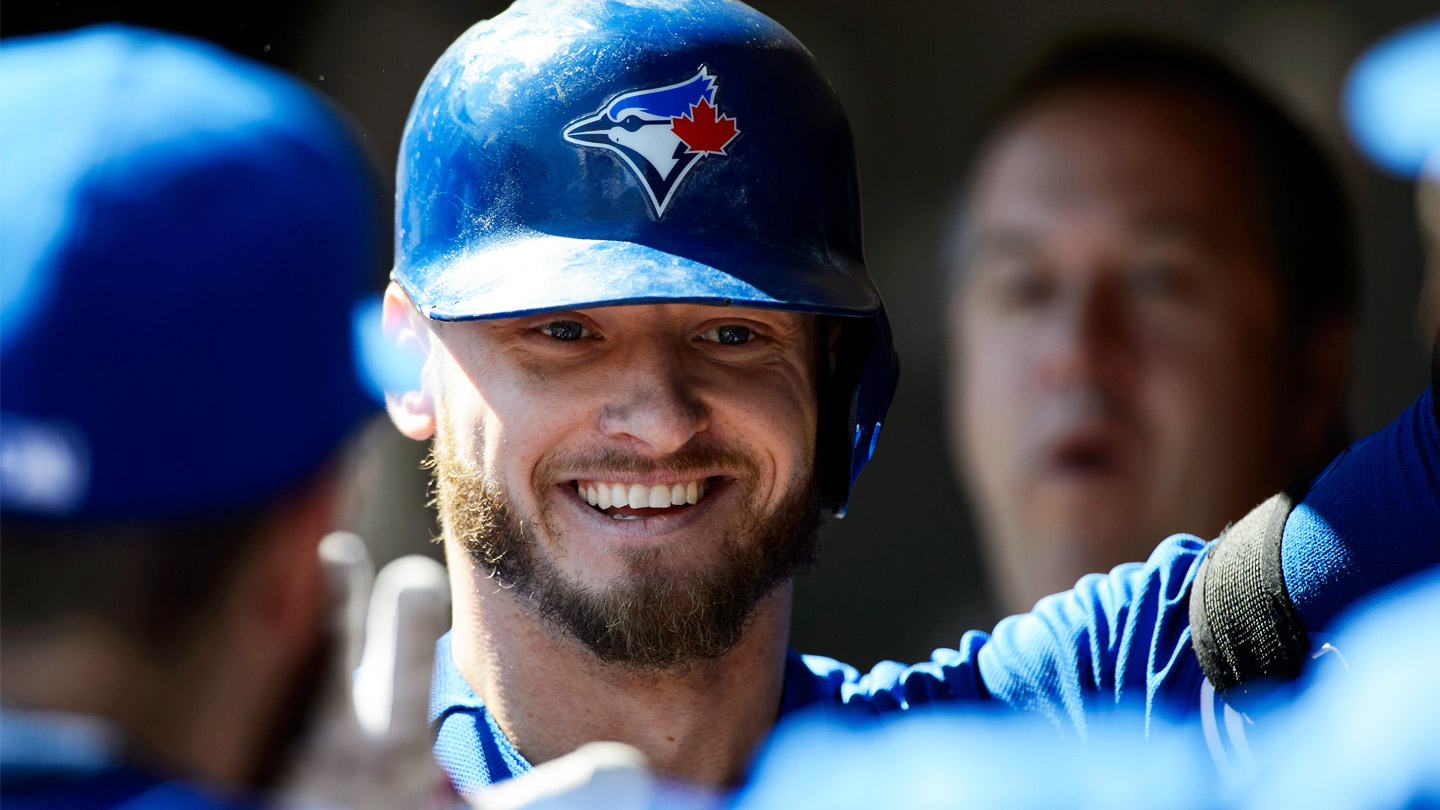
For years, the Chicago White Sox found themselves in baseball’s murky middle. From 2009 to 2016 they had just one 90-loss season, and thanks to the likes of Mark Buehrle, Chris Sale and Jose Quintana, they even contended on occasion, most recently in 2012, when they held onto first place in the AL Central until the final week of the season. Every time they came up short, they’d regroup, reasoning that they were just a couple moves away. “We almost tried to patch-and-play on the fly,” recalls White Sox GM Rick Hahn.
It didn’t work. Despite splashy additions such as Melky Cabrera, David Robertson and Jeff Samardzija, the White Sox missed the playoffs year after year. “Had we stayed healthy and had the baseball gods smiled upon us, we could have — should have — won at least wild-cards,” Hahn says. “But [putting up winning seasons with a flawed roster] is a difficult thing to sustain.”
Like Hahn, A.J. Preller made some high-profile additions soon after becoming a GM for the first time. But the Matt Kemp-Justin Upton-Craig Kimbrel Era Padres fell short of expectations, forcing Preller to re-evaluate. The Padres have now endured consecutive 90-loss seasons while bolstering their farm system, but if that’s the cost of building a legitimate winner, so be it. “If you look up and go, ‘Hey, if everything works out this year, we win 83 games,’ that’s probably not something that we’d look to build,” says Preller, who recently obtained a contract extension from Padres ownership. “We want to build a talent base instead of building a team that’s band-aided together for a one-year run that you might sneak into a wild-card.”

Ben Nicholson-Smith and Arden Zwelling host the best Blue Jays podcast in the league.
Listen now | iTunes | Podcatchers
Hahn came to a similar conclusion. The way he sees it, the White Sox didn’t have enough organizational depth. Their top players were elite but couldn’t get the job done on their own. “The problem really wasn’t players one through seven or one through nine on our roster,” he says. “It was what would happen beyond that group.”
This time last year, Hahn changed course and dismantled his team with a series of aggressive and well-received trades. Gone are Sale, Quintana, Robertson, Adam Eaton and Todd Frazier. In their place, the White Sox have built one of the best farm systems in baseball featuring top prospects Yoan Moncada, Lucas Giolito and Eloy Jimenez. Even if the deliberate step back doesn’t allow the White Sox to improve on the likes of Sale, it should provide a more balanced combination of stars and depth players. The next time Chicago contends, Hahn expects they’ll be deep enough that no injury or underperformance will “completely derail” the season.
Hahn and Preller aren’t alone. In recent years, the Braves, Phillies and Reds have all sacrificed short-term pieces to build for the future. The Tigers took the plunge this summer, and the Marlins are now embarking on yet another rebuild. And to find the source of the tear-it-down camp’s inspiration, one need look no further than the last two World Series winners, the Cubs and Astros. By bottoming out for years, those clubs secured top draft picks and larger draft spending budgets. Moreover, they accepted growing pains in a way that win-now clubs couldn’t, allowing the likes of Marwin Gonzalez to struggle at the MLB level before breaking out as stars.
Now, those sacrifices are paying off in Houston. One reason the Astros are so hard to topple in October? They can approach summer trades more aggressively. While the Twins and Angels battled late into September for the final AL wild-card berth, Houston’s decision makers realized early on that their team would reach the playoffs. “That was a huge advantage,” recalls Astros GM Jeff Luhnow. “Not many teams can do that because oftentimes you’re still fighting to get there as opposed to focusing exclusively on trying to win when you’re there.”
This summer, the Astros keyed in on impact and added Justin Verlander in a last-minute deal on August 31. The Dodgers were similarly aggressive, adding Yu Darvish even though they already had a massive lead in the NL West. Both teams were well on their way to 100-win seasons, but they gave up significant pieces knowing, rather than hoping, that their acquisitions would play in October. By way of contrast, the Twins sold at the deadline.
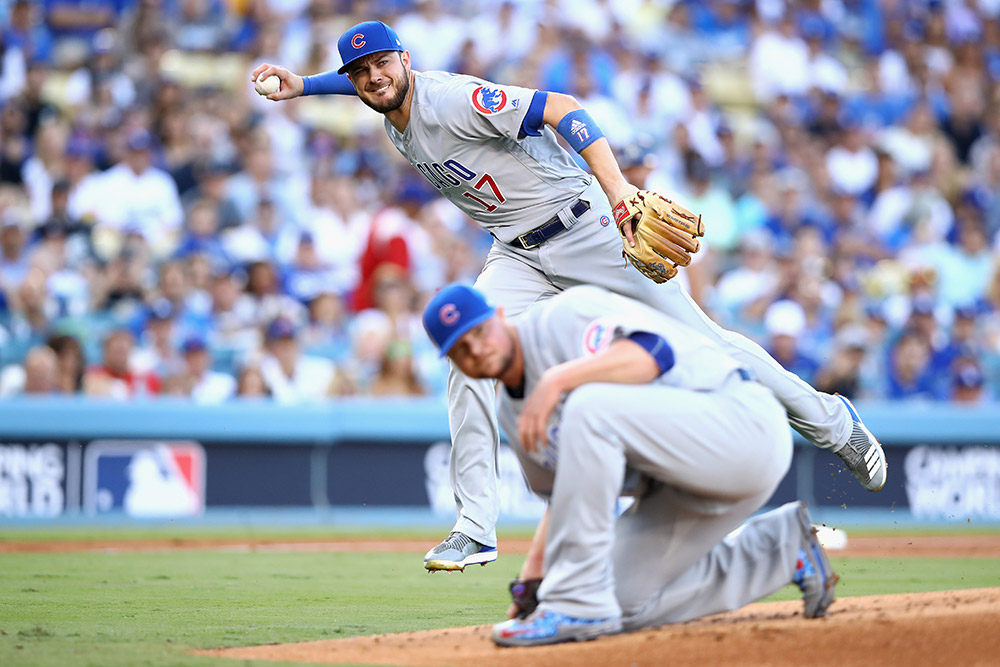
The path to the World Series is also shaped by the new playoff format. While the get-in-and-see-what-happens approach resulted in championships for wild-card teams including the Marlins (1997 and 2003), Angels (2002), Red Sox (2004) and Cardinals (2011), that was before the play-in game. Now, wild-card teams have to burn their best available starter just to reach the LDS. In 2015, the Astros won the play-in game thanks to Dallas Keuchel, but couldn’t use the left-hander as much as they would have liked in the ALDS. As a division winner, their whole pitching staff would have set up differently. “We might win that series,” Luhnow remarks. “There is a handicap for the wild-card, and it’s designed to be that way.”
One wild-card team has won it all since 2012, when MLB added the play-in game: the 2014 San Francisco Giants. “But they had Madison Bumgarner,” Luhnow points out. For the Giants, that was enough. With a 1.03 ERA in 52.2 innings, Bumgarner’s wasn’t a performance that teams can realistically bank on squeezing out of an elite starting pitcher — it was a post-season for the ages.
Given the challenge of sneaking through the playoffs, it’s understandable that some teams would build slowly instead of trying to patch together a winner. But that doesn’t necessarily refute Epstein’s crapshoot theory, and it doesn’t acknowledge that there’s also risk inherent in rebuilding. To fully weigh the question of whether to push in or build for the future, we must also consider the perspective of those who believe that the playoffs remain largely unpredictable — that every playoff team has a legitimate shot at winning it all.
Tearing it down might look close to foolproof these days, but the success the Cubs and Astros are enjoying wasn’t preordained. For starters, expert front office moves drove both turnarounds. Beyond that, there’s some game theory in play. Chicago and Houston rebuilt when other teams weren’t deliberately bottoming out. Attempt to do the same now, and you’ve got more competition for the most intriguing minor-league free agents and hard-throwing relievers seeking a place to rebuild their value.
And as tempting as it is to assume that teams like Houston, Los Angeles and Cleveland will keep reeling off 100-win seasons, not even GMs can truly predict baseball. Injuries and breakouts across the league drastically impact the path to the playoffs for a few teams every year. For example, rival players who project to generate three wins above replacement might end up producing five.
“Or,” says Diamondbacks GM Mike Hazen, “you think that your competition has a bunch of five-win players and they end up being three-win players. It can change quickly.”
Hazen, who led Arizona to the playoffs last year, prefers not to dwell on the question of whether his team projects as a wild-card contender or a threat to win the division. Instead of targeting a certain win threshold, he attempts to accrue as much talent as possible, accepting that projections can only tell him so much. “You can end up chasing something that may not exist,” Hazen says. “There’s some wide parameters on what you’re chasing, but I don’t think you ever know exactly.”
Cardinals GM Michael Girsch echoes that sentiment: “A year ago this time, nobody was like, ‘Houston’s a dominant force.’”
Continued belief in the element of unpredictability helps explain why some teams haven’t completely bottomed out. The Athletics, for example, have been opportunistic in recent years, alternately buying and selling without pushing all-in or tearing it down. It’s been three years since Oakland reached the playoffs, and that 2014 team — which featured Donaldson, Jon Lester and Josh Reddick — lasted just one game, a 9-8 loss to Kansas City in 12 innings. Yet that experience doesn’t diminish the value of a post-season appearance for Athletics GM David Forst. “Playoff berths are so precious and so hard to come by that if you are that team that’s on the brink, you should absolutely do what you can to make it,” Forst says. “You never know with injuries, with whatever outside factors are going to play in. If you have the opportunity to do it, I think you should grab it.”

This year’s second wild-card teams played just one more game than Oakland, and their rosters don’t measure up to baseball’s elite teams, but at least they had a chance. “I would tell you that the Twins and Rockies had successful seasons no matter what [happened in the playoffs],” Forst says. “They played a couple days longer than we did, but there’s a lot of value in those post-season appearances.”
Just ask the Yankees. As late as July, New York was hovering around .500 thanks to the surprising contributions of young players such as Aaron Judge, Gary Sanchez and Luis Severino. “There are people who would have said mid-season the Yankees should just continue the track they’re on and not invest heavily, let their young players [develop],” Forst says. Instead, New York acquired Sonny Gray from Forst, bolstered their bullpen in a deal with Hahn’s White Sox and surged all the way to the ALCS, where they were a couple breaks away from upsetting the Astros.
It’s the possibility of that kind of run that keeps teams pushing ahead even when the competition looks fearsome. Chaim Bloom, the senior vice-president of baseball operations for the Tampa Bay Rays, has been through the wild-card experience in both formats. On each occasion, the Rays lost, but Bloom still makes the case that teams on the edge should push in. “Those opportunities, to me, are precious,” Bloom says. “It’s tough to [make the playoffs] in this game and you can’t be flippant about how difficult it is to even get to that point.”
While this year’s final four teams — the Astros, Dodgers, Cubs and Yankees — were all phenomenal, enough randomness impacts playoff games that the best team won’t always win. Who could predict a baseball going off the brim of Chris Taylor’s hat, for example?
“The six-month season separates the wheat from the chaff, but on any given night, a lot of different things can happen,” Bloom says. “Over a five- or a seven-game series, it’s less random than one night, but still — all it takes is a couple of things to swing a series.”
The Blue Jays got a first-hand reminder of that unpredictability in 2015 when, in the deciding game of the ALDS, Russell Martin’s return throw back to the pitcher bounced off Shin-Soo Choo’s bat, allowing Rougned Odor to score. The next time Toronto played a winner-take-all game, in 2016, it lasted 11 innings and was arguably decided when Buck Showalter opted not to use his best reliever. Neither of those twists of fate truly reflected the talent on the field, yet both shaped high-stakes games. Events like these suggest the crapshoot theory still applies, that even today the unpredictable nature of the playoffs creates opportunities for teams to surprise.
That said, you have to hover around .500 to have a real shot. In 2017, the Blue Jays hoped to return to the post-season a third straight time, but they ended up struggling all summer. Ahead of the July 31 trade deadline, team decision makers considered the health of their players, their projected win total and subjective assessments of the roster. The verdict: it wasn’t their year. “We didn’t trade Vladimir Guerrero [Jr.] and Bo Bichette for Player X at the deadline,” Atkins says. “We didn’t triple down.” Realizing the Blue Jays weren’t going to contend, Atkins instead dealt Francisco Liriano to the Astros for Teoscar Hernandez in a trade that now looks like a win for Toronto. The Hernandez deal showed that the Blue Jays were willing to look ahead under certain circumstances. The question now becomes how far forward do they look.

On paper, there’s a case to be made for listening on Donaldson this winter — perhaps even more so now that Stanton’s a Yankee. Donaldson would undoubtedly net a substantial return, but there’s no guarantee he’d command quite the same at next year’s trade deadline. Contending teams might have third basemen in place by then, and those that don’t could have the option of pursuing fellow 2018 free agent Manny Machado in trade.
That said, Donaldson’s expected to play for Toronto in 2018. Atkins says team decision makers feel a “personal responsibility” toward the fans who led the American League in attendance this past season and watched in even greater numbers on TV. The GM cites a similar obligation to veterans such as Martin, J.A. Happ and Troy Tulowitzki. “When we don’t [win], I feel that we’ve let them down,” he says.
That’s one of the reasons the Blue Jays aren’t going to tear it down. Instead, they’ll look to contend in 2018 by supplementing their existing roster this off-season and hoping that some of the players who suffered injuries in 2017 rebound. “I personally don’t feel that you should ever be in a rebuild mode, especially in this market and in this environment,” Atkins says. “There might be soft resets based on circumstance, based on where you are as a team and it’s managing risk and mitigating risk, and understanding that there are times that you should be more opportunistic. But personally, I don’t buy into the strategy that we’re not going to be a good team for five and six years.”
The potential for down years exists for all teams, but planning for them comes with risk, too. Losses now don’t assure teams of wins later, as the Reds and Padres can attest. On their own, a few top draft choices can only push a team ahead so far. “I just don’t buy into the strategy [of] ‘Hey, let’s pick higher and let’s just not be a good team for a significant period of time,'” Atkins says.
The way Blue Jays decision makers see it, winning and developing talent aren’t mutually exclusive. Atkins has improved the farm system over the last two seasons, while investing heavily in areas such as player development and high performance in the hopes that the next wave of Blue Jays players will sustain success.
That’s one part of the challenge. The other part, turning an 86-loss team into a contender without sacrificing top prospects, will require some savvy moves from within those executive offices between now and opening day. It’s the success of those deals that will ultimately determine whether the Blue Jays get to put that crapshoot theory to the test once baseball returns to Rogers Centre.

